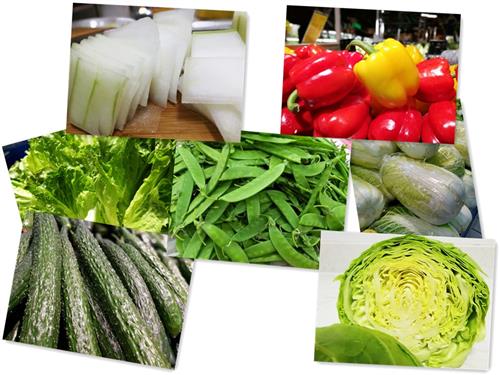Foods that are suitable for people with diabetes should not only provide good and balanced nutrition, but also help control blood sugar. Can healthy foods mentioned in the list of healthy foods enter the recipes of diabetics? Xiaobian has integrated the recommendations of the American Diabetes Association and Chinese residents' dietary guidelines to recommend the following ten categories of health for diabetics: food. Of course, for the healthy people, the following foods are all edible.
I. Whole grains and products
Unlike refined cereals (grain) such as white rice and flour, whole grains (coarse grains) contain three major parts of the grain: endosperm, germ, and bran, which are more nutritious.
Whole grains include stem rice, barley, oats, corn, brown rice, black rice, barley, buckwheat, millet, gardenia (rhubarb rice), yellow rice, glutinous rice, glutinous rice, etc.; whole grain products include whole wheat flour, whole oatmeal , Oat noodles (buckwheat noodles), cornmeal, soba noodles, etc. Mix whole grain cereals and whole grain products in grains such as rice grains and rice flour, miscellaneous grain pasta, and other grains as staple foods, which are more conducive to blood glucose control in diabetics than fine grain staple foods.

Second, sweet potato
Also known as sweet potato, sweet potato, hawthorn, sweet potato. Sweet potatoes and cereals are rich in carbohydrates and dietary fiber, but some of the vitamins are higher than cereals. It can be used as a substitute for some fine grain staples to help maintain a smooth postprandial blood glucose level.
The alternative means that if you eat sweet potatoes, eat less on that day's meal.
Third, beans
Soybeans (soybeans, black beans, green beans, green soybeans), kidney beans, kidney beans, red beans, and lentils are rich in carbohydrates, dietary fiber, and high-quality vegetable proteins. Soybeans are also rich in healthy omega-3 fatty acids and can be delayed. Development of arteriosclerosis.
Without gout, hyperuricemia, and renal insufficiency, diabetics can add some beans to each meal.
Fourth, dark vegetables
Dark vegetables are dark green such as spinach, canola, spinach, broccoli, shallot, leeks, garland chrysanthemum, etc.; red, such as carrots, red peppers, etc.; purple, such as purple cabbage, eggplant and so on.
Dark-colored vegetables are more nutritious than light-colored vegetables, and they are very healthy when cooked with low salt and oil. These dark vegetables contain almost no carbohydrates and do not cause postprandial blood glucose. Diabetic patients are advised to consume at least half a catty of dark vegetables for each meal, and pay attention to the use of various vegetables.
Five tomatoes
Regardless of whether tomatoes are used as vegetables for cooking or as food for meals or snacks, they are rich in vitamin C, vitamin E, and various trace elements.
Citrus
Oranges, oranges, pomelos, and oranges all belong to fruits with low sugar content. The consumption of appropriate amounts of snack fruits can help diabetics maintain a stable blood glucose level between meals.
It is recommended to eat a fist-sized one between meals.
Seven berries
Such as kiwi, sea buckthorn, blackcurrant, blueberry, strawberry and prickly pear, rich in a variety of antioxidant substances and water-soluble dietary fiber.
The berry is rich in color and full of aroma. It can be used with plain yogurt to serve as a dessert that is both beautiful and suitable for diabetics. Compared to breads, cakes, cookies, and snacks that contain added sugar, such desserts are more beneficial for glycemic control.
Eight, milk, plain yogurt
Milk and its products such as milk powder and yoghurt mainly provide high-quality calcium that is easily digested and absorbed, and can help prevent or postpone the age at which osteoporosis occurs. In addition, dairy products are low-glycemic index foods that do not cause severe fluctuations in blood glucose. Diabetic people are recommended to drink a glass of milk (about 300 mL) or a small cup of plain yogurt (about 150 g) a day.
People who drink milk diarrhea, that is, lactose intolerance, you can choose low lactose milk or yogurt, hyperlipidemia and overweight and obese can choose skim milk and non-fat yogurt.
Nine, fish
Provides high quality, easily absorbed protein and polyunsaturated fatty acids. Try to use steamed, boiled cooking methods. Frying broiled cooking brings in too much oil and salt, and high temperatures can also destroy unsaturated fatty acids in the fish. Fish contains very little carbohydrate and helps with glycemic control in the recipe. Diabetics are recommended to eat fish twice a week.
Ten, plain nuts
Unflavored, non-fried, or baked raw nuts, such as sunflower seeds, peanuts, walnuts, almonds, pistachios, sesame, etc., are rich in healthy, unsaturated fatty acids. Eating a small amount of natural nuts every day, along with fruit or yogurt, as a healthy and delicious snack helps increase weight while keeping blood sugar steady.
Shampoo,Dry Shampoo,Dandruff Shampoo,Head And Shoulders Shampoo
Guangzhou Lingxue Cosmetics Co., Ltd , https://www.gzlxgj188.com